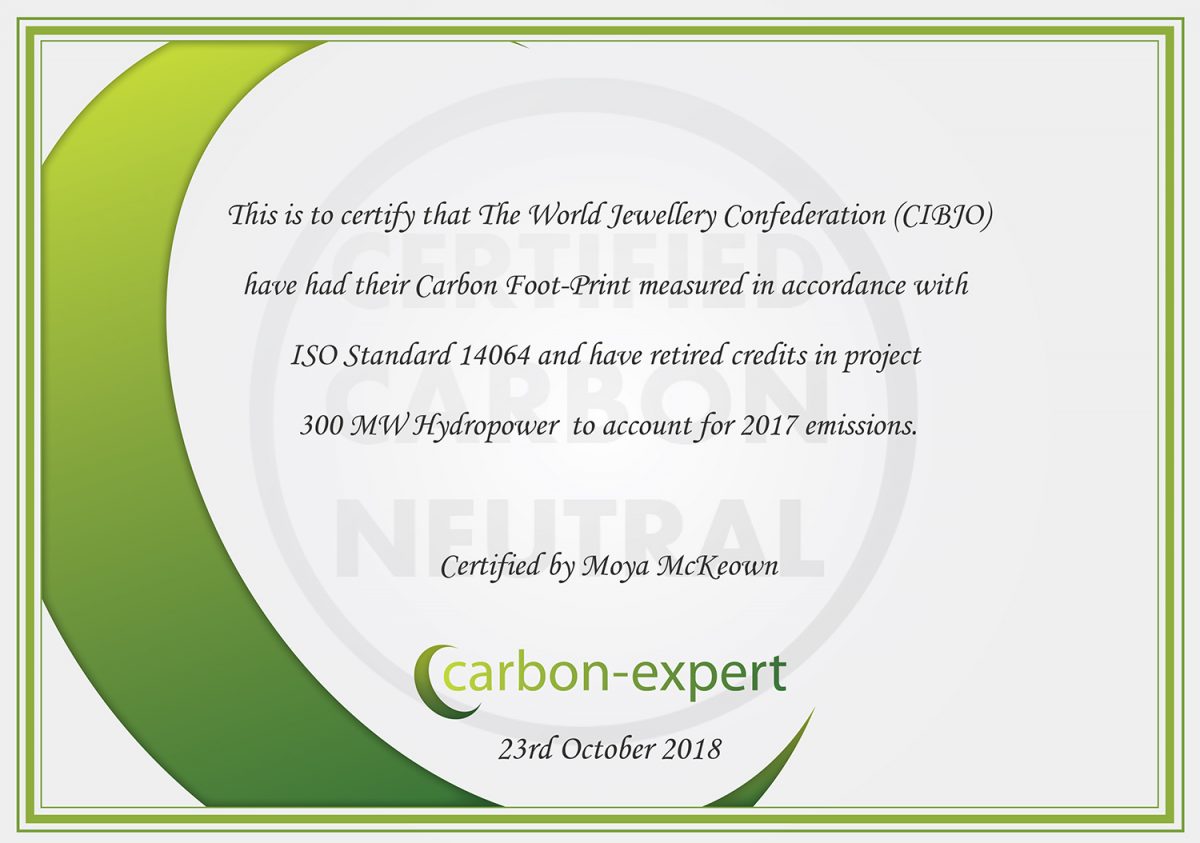CIBJO certified as being carbon neutral for fifth consecutive year

NOVEMBER 6, 2018
CIBJO, the World Jewellery Confederation, has been certified as being carbon neutral in 2017, which is the fifth straight year that offset its greenhouse gas emissions through the purchase of carbon credits. It did so as part of the CIBJO Greenhouse Gas Measurement Initiative that was launched several years ago to promote environmental consciousness and responsibility in the jewellery and gemstone industries.
“Accelerating climate change through global warming is arguably the greatest challenge of our time,” said Gaetano Cavalieri, President of CIBJO. “It crosses borders and nations, causing havoc and destruction that threaten of all our planet’s children, their children and their children’s children. The vast majority of scientists agree that it largely is a result of the massive quantities of carbon gases that we humans have pumped over many years into the atmosphere, and if the trend is not reversed the consequences will be even more devastating. But no single act will solve the problem. It is up to all of us. The CIBJO Greenhouse Gas Measurement Initiative was established to provide our sector a way for playing its part.”
To become carbon neutral, CIBJO’s carbon footprint first was measured by Carbon Expert, an environmental consulting organisation. It included all greenhouse gases emitted by CIBJO as a result of regular operations during the course of the year, and the annual congress in Thailand in November 2017. This was offset through the purchase and retirement of 131 Voluntary Carbon Units (VCUs), which were invested in a 300 MW hydroelectric project in India, which is a recognised carbon offsetting project.
Greenhouse gases, which radiate and trap heat in the earth’s atmosphere, are considered a primary cause of climate change by the overwhelming majority of experts in the scientific community. These gases include carbon dioxide, whose entry into the atmosphere is accelerated through the use of fossil fuels; methane, which is emitted during the production of coal, natural gas and oil, as well as through emissions from livestock and other agricultural practices, and through the decay of organic waste in municipal solid waste landfills; nitrous oxide, which is emitted during agricultural and industrial activities, as well as during combustion of fossil fuels and solid waste; and fluorinated gases, which are sometimes used as substitutes for stratospheric ozone-depleting substances.
